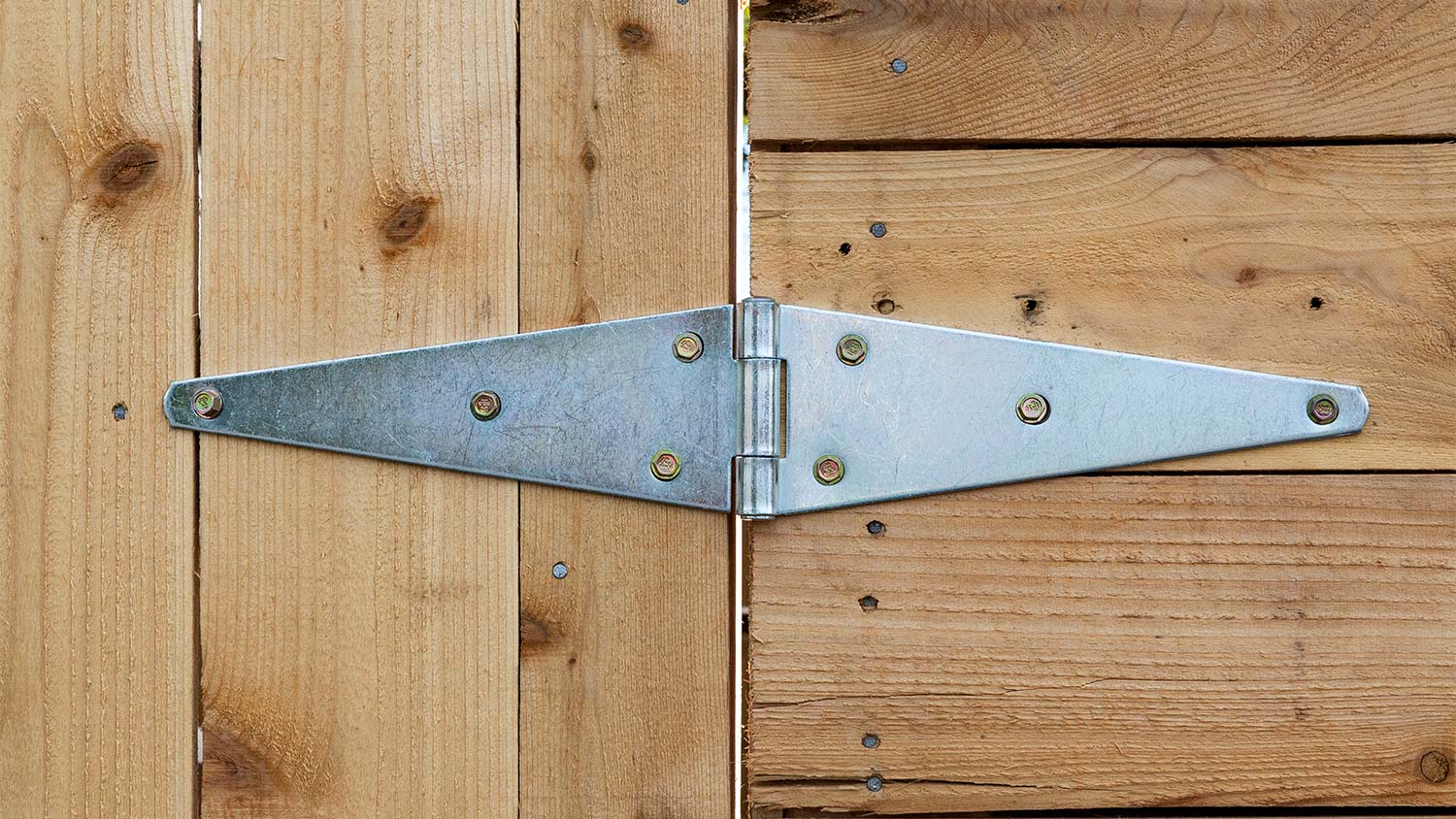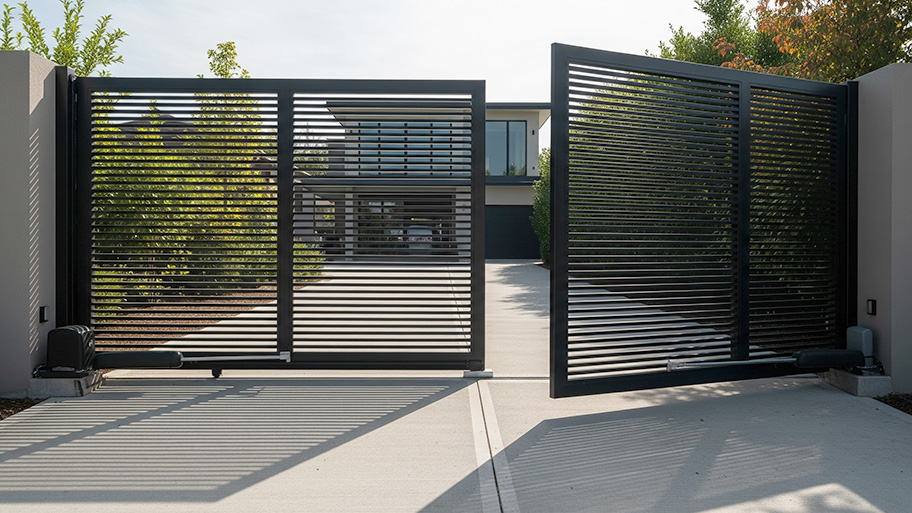
Gate installation costs depend on the material your gate is made of, and the type of gate you want to install. Explore all the gate installation cost factors in this guide.
Give that fence gate a lift


Over time, the fence gate that provides security and accessibility to your yard can start to droop—but learning how to fix a sagging gate will stop gravity from taking a toll. Repairing your gate will keep your fence functional and looking spiffy. Hire a pro or handle a sagging gate repair yourself with these seven steps.

Before you get started, you’ll need to buy an anti-sag gate kit that suits your fence. Take a diagonal measurement of your gate, and make sure you purchase a kit with a wire cable that's long enough for your gate.
If you need to replace the hinges, you’ll want to check the ones currently on the fence and purchase the same size.
Your gate’s sagging problems could stem from the post, the hinges, or both. To prepare for the right repair, you’ll need to assess the situation first.
Check the hinges: First, examine the hinges to see if they’re rusty or bent or if the screws holding the hinges to the post are loose or missing.
Examine the post: You should also look at the post supporting the gate. Sometimes the weight of the gate will cause the post to lean in the soil. See if the base is still standing straight or if it’s leaning over. You can eyeball the post or use a level to see if it’s still plumb.
Check your fence gate doors: The fence gate door should be square. If it isn’t, the latch side of the gate will drag on the ground when you attempt to open or close it.
If you’re dealing with rusty or bent hinges, you’ll need to replace them with new ones, which requires removing the gate from the post. Depending on the type of gate you have, you may need some help holding it up while you remove the old hinges and install the new ones.
Prop up the gate by sliding some scrap lumber under it before removing it, or find another set of hands to hold it while you unscrew the hinges. An impact driver or cordless drill with a screwdriver bit should make quicker work of the screws. After removing the old hinges, rehang the gates with the set of new hinges.
If the culprit is a loose hinge screw or two, your repair may be simple. If the screws are still viable (as in not stripped or rusty), then simply tighten the screws using a power driver to pull that sagging gate back into place.
If you can spin the screws with your fingers while they’re still in the post, then they have stripped out the hole and are no longer securing the hinges and the gate to the post. Replace the old screws with new ones with the same diameter but a ½ inch longer. The longer screws will bore deeper into the post, securing the hinges.
Sometimes the hardware holding the gate together will fail, causing the gate to sag. Using a tape measure, you can see if the gate is square. Measure from corner to corner; if the two diagonal measurements aren't the same, the panel is not square.
If the gate isn’t square, fix it by forcing it back into shape and adding braces. Stretch a pipe clamp or band clamp from the top of the hinge side of the gate to the bottom of the latch side and tighten to force that wonky gate back into a square shape.
With the gate still clamped, install corner braces on the upper left and lower right corners of the gate. You can create simple braces using a two-by-four, or you can purchase metal braces from your local home improvement store.
If you choose to make your own, cut the two-by-four to a length of 12 inches and make 45-degree miter cuts on both ends. Attach the brace to the gate’s corners using deck screws.
If the gate’s top rails overlap with its vertical stiles, you won’t be able to use corner supports. Instead, drive several screws through each corner to add support.
Attaching an anti-sag gate kit on the inside of the door will provide additional support, ensuring your gate doesn’t slump from a perfect square into a parallelogram. The kit consists of two brackets that install on opposing corners of the gate and a metal wire and turnbuckle that provide the bracing.
The kit’s two metal brackets fit over the corners of the gate's lower latch side and upper hinge side. Hold each bracket in position and drill pilot holes through each pre-drilled hole. If the gate hinge is in the way, you’ll need to remove and reinstall it in a slightly lower position on the gate framing to make way for the bracket.
Secure each bracket to the gate by driving the metal fasteners from the kit into the pilot holes using your power driver. Don’t completely tighten the screws on the lower bracket until after you add the wire.
Thread the wire cable through the hole in the bracket on the lower latch side, then tighten the screws on the lower bracket. Loop the cable back over on itself and secure it with the cable clamp included with the kit.
The turnbuckle allows you to adjust the tension of the wire bracing your gate. It consists of a metal piece with a hook threaded into one end and an eyelet threaded into the other. Extend the turnbuckle to its maximum length by unscrewing both ends, then attach the hook end to the eyelet on the bracket you installed on the upper hinge side of the gate.
Thread the other end of the wire cable through the eyelet, loop it back on itself and attach the cable clamp. Take as much slack out of the cable as possible by pulling the end with a pair of pliers, then tighten the clamp. The cable should now diagonally stretch from the turnbuckle, which is attached to the bracket on the gate's hinge side, across the gate to the bracket on the latch side.
Turn the metal piece between the hook and the eyelet on the turnbuckle clockwise to begin tightening the cable. As the tension increases, the turnbuckle will become too difficult to turn with your fingers.
Insert a screwdriver into the turnbuckle to continue tightening it. Check the gate periodically as you tighten the cable to see if it’s square. Resist the urge to overtighten the turnbuckle, as too much tension could warp the gate.
If a wobbly post is the issue, you’ll need to use a spade to dig around the entire post. Your hole should be about three times the diameter of the post. Check and make sure the post isn’t rotten. You’ll need to replace it with a new one if it is.
If the post is still viable, shore it up by pouring cement around it. Then use two-by-fours to brace the post until the cement cures, which takes about two days.
Fixing a sagging fence gate is not a difficult task to complete, and you can save a considerable amount of money if you choose to take this job on yourself. Smaller gates are easier to repair than gates for taller 6-foot privacy fences. If you DIY, you can repair a gate for between $25 and $50, depending on the parts and labor required.
Professional fence gate repair costs about $400 if you hire a local gate repair pro to finish the job. If you’d rather not use power tools, then let a pro handle this one.
From average costs to expert advice, get all the answers you need to get your job done.

Gate installation costs depend on the material your gate is made of, and the type of gate you want to install. Explore all the gate installation cost factors in this guide.

Discover the average automatic gate installation cost, key price factors, and ways to save. Get expert tips for homeowners planning a new automatic gate.

Find out the average automatic gate repair cost, key price factors, and ways to save. Get expert tips to budget for your automatic gate repair.

Learn how to build a wooden gate for your fence so you can secure your property while enjoying easy access to the yard.

Automatic gate openers let you open and close your heavy swinging gate with the push of a button. Use this DIY guide for the steps to gate opener installation.

This guide teaches you how to build a driveway gate in 9 steps. Here’s everything you need to know to create and install a simple wood driveway gate.